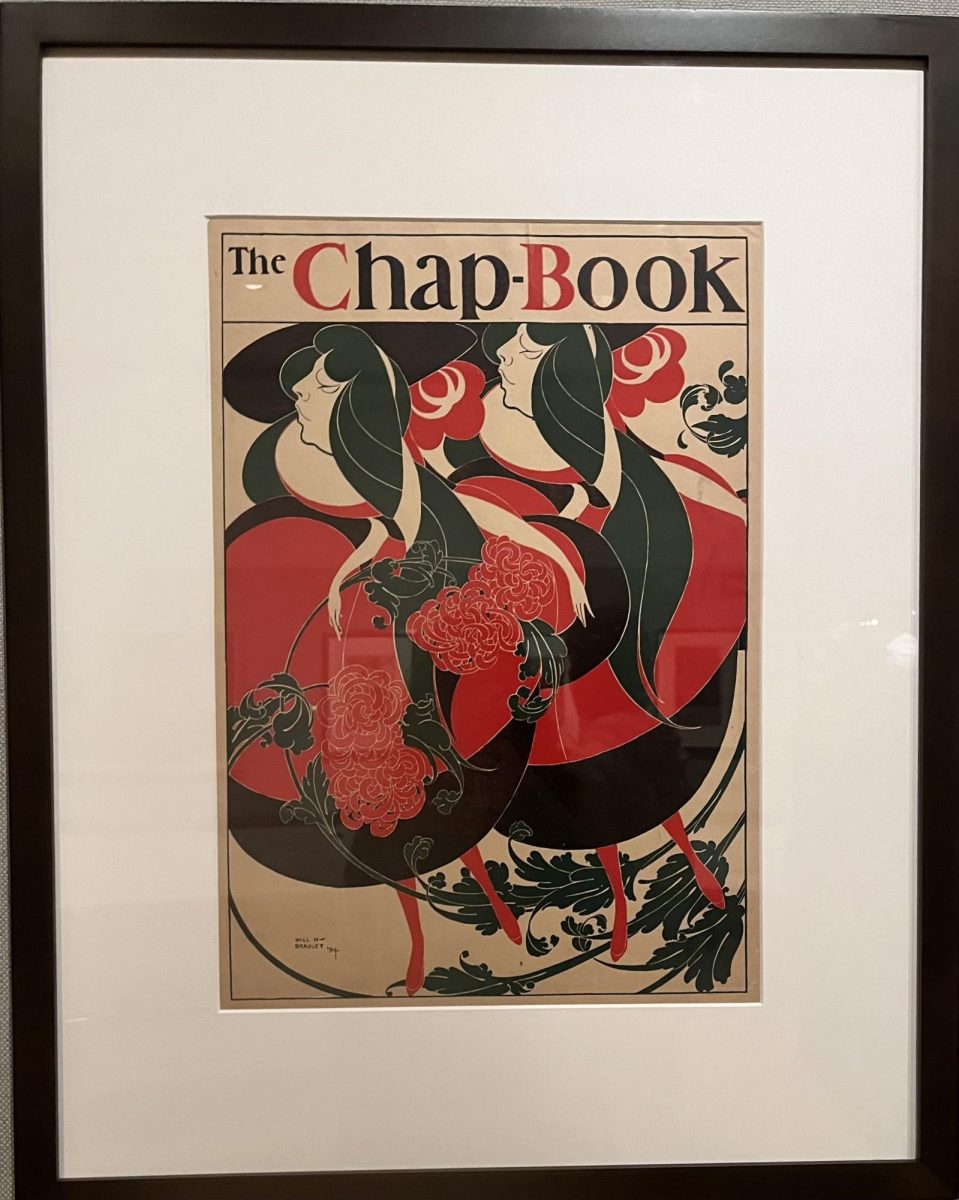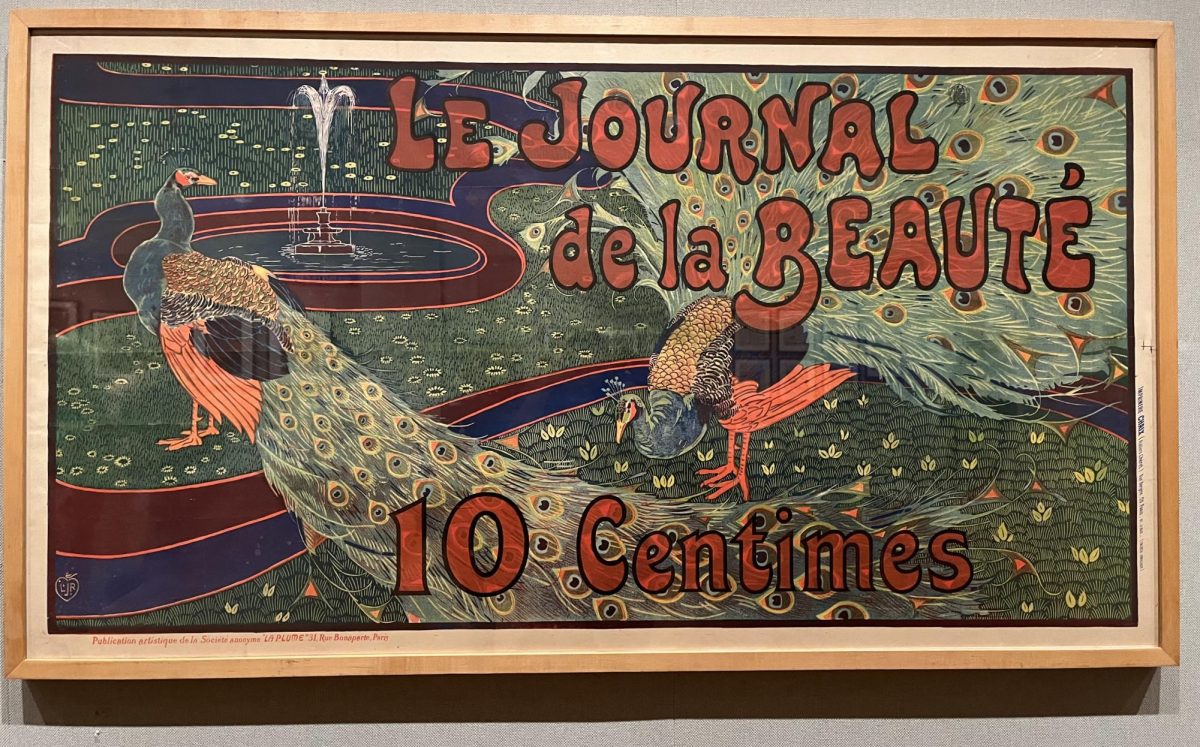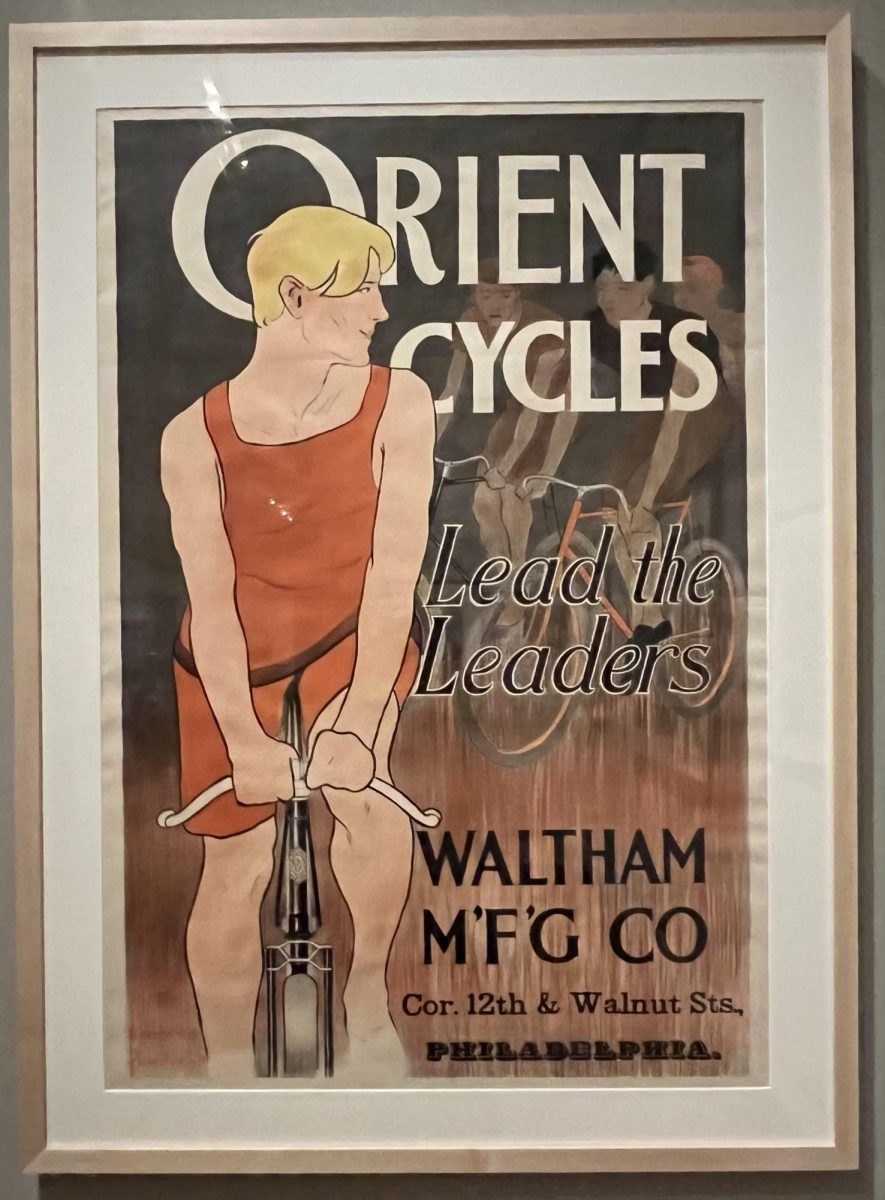While wandering through the bustling Metropolitan Museum of Art in Manhattan, it may be difficult to take notice of the plethora of temporary exhibits amongst all of the permanent galleries. But if you take a moment to slow down, a charming exhibit occupying a small hallway may just catch your eye. ‘The Art of the Literary Poster’ from the Leonard A. Lauder collection certainly caught mine. The exhibit opened on March 7th and is on view through June 11th, 2024, and it is filled with detailed poster designs and their rich history. From the simple colors to the intricate patterns and iconic art nouveau style, the collection displays a beautiful representation of this early 19th-century marketing style and art form.
The 1860’s was a time for industrialization in Europe which led to an increase of mass produced products made in factories. Naturally, this took the focus away from fine art, which in turn sparked a retaliation from many artists of the time. These artists started to handcraft practical items such as tables and lamps while still keeping an artistic flair. This was called the Arts and Crafts Movement. With a goal of maintaining beauty in this time of industrial development, the Arts and Crafts Movement had a large impact on the making of Art Nouveau.
Art Nouveau artists were focused on balancing everyday life with elegance. Art styles around this time reflected the modern society surrounding it by creating art that coincided with the economic changes. The Art Nouveau movement was originally meant to combine fine art with decorative art.
As time advanced, artists found a different way to integrate art into society, and the Art Nouveau Movement led to a new age for marketing strategies. Posters and advertisements were now catered toward the luxury living status that middle and upper class people hoped to achieve. Art Nouveau took over commercialism in all aspects. Magazine covers, book covers, and even advertisements for products such as bicycles were heavily influenced by the Art Nouveau Movement.
‘The Art of the Literary Poster’ tells the tale of Art Nouveau through over 40 works from the Lauder collection.
The exhibit is organized in sections based on the types of literary posters one may have encountered during the late 19th century. Each section focuses on a specific style of poster. One section that I thought to be particularly interesting was entitled ‘Seeing Double’ in which the use of repetition gave the posters a unique aesthetic, alluding to the creation of the poster itself.
In the early 19th century, prints were created completely by hand; the art would be hand-drawn and hand-colored. As these posters became more popular, a form of printmaking called chromolithography was established, where printing the color ink in blocks made the printing process simpler. This printing technique was heavily inspired by the Japanese art form of woodcutting which is why some art nouveau pieces have Japanese influence.
Many works shown in the exhibit mimicked this printing style through repeating images and minimal colors. One of the covers for an 1894 issue of ‘The Chap-Book’ was drawn by William Henry Bradley and features a common motif he liked to call ‘The Twins.’ Two identical women overlap each other slightly as their figures blur together. The bold image is made simple by only using three colors, green, red, and black.
Other than the ‘seeing double’ technique, the literary posters in this exhibit had many common themes. Specifically, peacocks were a popular element of many Art Nouveau pieces. They were also yet another way to recognize the art form and get a sense for the time period.
In fact, while I was admiring Louis John Rhead’s peacock lithograph, I met a poster art enthusiast named Joan Cukos. When I asked her what sparked her passion for poster art, she told me about her love for the aesthetic and color contrasts that Art Nouveau pieces include. She also mentioned the modernness of the art form. It was not only an advertising technique but a revolution for art as we know it. One element in particular that Cukos liked was the use of women in the art. “The idea of ‘the modern woman’ was new at this time… having women shown in the ads and having things being catered toward them,” Cukos said.
In the early 19th century, women often stayed at home to tend their house while the men worked. But just like the art forms, outdated women stereotypes were being challenged. The idea of ‘the modern woman’ or the ‘new woman’ surfaced in the late 19th century. The new woman experienced more freedom and rebelled against gender norms. Young women especially took advantage of this newfound independence as they explored jobs and expanded their previously limited permissions.
A majority of these posters depicted women participating in relaxing, and everyday activities. This was important as it gave women the representation they were lacking at this time and made sure to appeal to women as they were now able to participate in this culture.
A section in the exhibit is entitled ‘Leisure’ and includes many posters with women either playing piano, reading books, or riding bikes. In fact, almost every poster had a woman as its subject participating in activities that were not limited to a house. This shows that these posters not only impacted art, but societal norms as the focal point for these pieces were women in their everyday lives.
Most of the posters in this exhibit were either magazine covers or book covers, otherwise known as literary posters. However, these posters were used to advertise products as well. Most commonly, they advertised bicycles. Drawings of well-dressed women with timely voluminous hairstyles and hats were the stars of multiple bicycle advertisements. During this time period, bicycles were exclusive to the rich and were advertised as such. In ads and magazine covers, people in expensive and trendy looking clothes were seen riding bicycles, promoting the vehicle even more.
As time went on, the demographic of bicycle riders changed. It went from being a way for young women in the 1890’s to feel independent and free, to a ride that people of all ages enjoy.
It is interesting to think about how different the world was back then, what the trends were, and what the social setting was like. I enjoyed my time studying each work of art and considering how it played a part in the world back then, and maybe thinking about how it could translate in our current world.
Lucky for me, I was not the only one with this mindset. Two visitors, Charlotte and Eric, were kind enough to share their unique perspectives with me. “It’s fun looking at all the different fonts that were used and thinking about the marketing tactics,” Charlotte commented. When asked if they thought these strategies would work today, Charlotte replied, “It would be perceived as a very classy thing to do. It would only work for a specific market.” This is due to the sophisticated nature of the style at this time. Today, advertisements are simple and to the point, and they far from resemble fine art in any capacity. It would not hold up as well in our ever changing and mass production economy that we live in now.
Unfortunately, Art Nouveau’s beauty and elegance is what eventually led to its end. The appeal for these works had so much to do with its exclusiveness. As the genre gained popularity, it started to fizzle out. Not only that, but the production of these posters could not catch up with the rate of industrialization. Posters did not have time to be as intricate and thought out, as they had to be easily copied and time efficient. Unfortunately, the lavish flare of the literary poster did not mesh well with a larger audience.
Although Art Nouveau is now a thing of the past, its memory still lives on in these posters. The Leonard A. Lauder’s collection of literary posters is a beautiful display of the late 19th century’s marketing techniques with many spectacular and intricate works. If your interest in literary posters is as piqued as mine was after learning about the exhibit’s history, I highly encourage you to take a visit to the ‘Art of the Literary Poster’ exhibit to experience these art works for yourself. Allow yourself to be taken back to the 19th century world of the literary poster.
‘The Art of the Literary Poster’ tells the tale of Art Nouveau through over 40 works from the Lauder collection.



